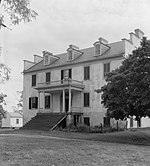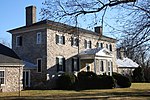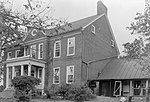Jefferson County Alms House
1813 establishments in VirginiaEastern Panhandle Registered Historic Place stubsFarms on the National Register of Historic Places in West VirginiaFederal architecture in West VirginiaHouses completed in 1813 ... and 4 more
Houses in Jefferson County, West VirginiaHouses on the National Register of Historic Places in West VirginiaNational Register of Historic Places in Jefferson County, West VirginiaPublic housing in West Virginia
The Jefferson County Alms House, also known as Snow Hill Farm, located near Leetown, West Virginia, is an historic Federal style house. Snow Hill was built circa 1813 for John Hurst, son of James Hurst, a prosperous local landowner. In 1857, Snow Hill was purchased from the Hurst family for use as a farm for the local poor. By 1931 the Alms House (also known as the County Infirmary) had declined to the point that it had become a local disgrace. Corrective measures were taken, and the Infirmary survived until 1959, when its last nine inmates were moved to other quarters.The property now houses a number of County agencies.
Excerpt from the Wikipedia article Jefferson County Alms House (License: CC BY-SA 3.0, Authors).Jefferson County Alms House
Old Leetown Pike,
Geographical coordinates (GPS) Address Nearby Places Show on map
Geographical coordinates (GPS)
| Latitude | Longitude |
|---|---|
| N 39.335277777778 ° | E -77.908333333333 ° |
Address
Wee Disciples Christian Academy
Old Leetown Pike
25438
West Virginia, United States
Open on Google Maps





